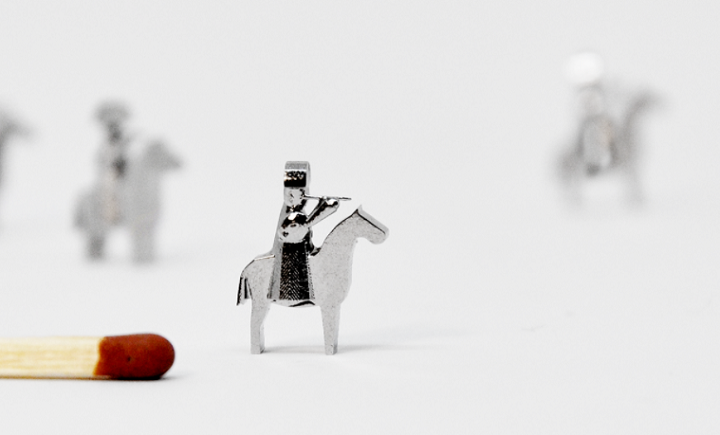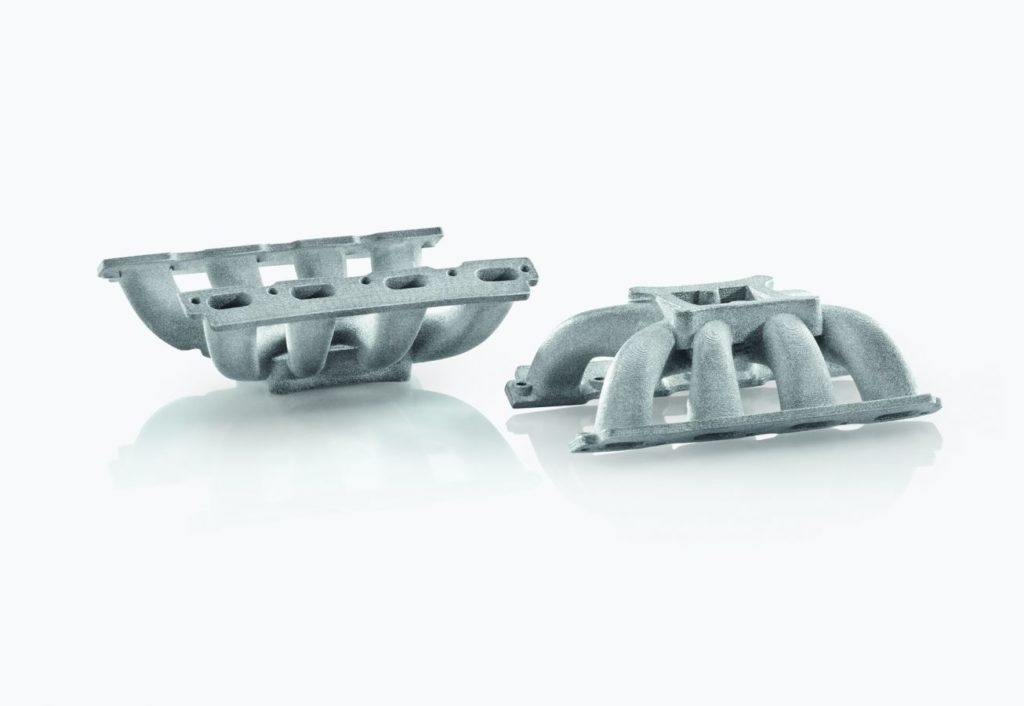Austrian slurry stereolithography (SLA) company Incus has closed a series A round with AM Ventures and is bringing aboard ex-EOS CEO Adrian Keppler as a consultant, as well as investor. The company is now manufacturing its Hammer Lab35 3D printer and will use the money to industrialize its Lithography-based Metal Manufacturing (LMM) technology and become a solution-oriented business.
“The continued support of our investors underscores the potential of our technology and enables us to expand our operational and R&D capability. Our production-scale printer is symbolic of our future goals. In sinter-based AM, post processing and the manual work it entails is time-consuming and we are planning to provide new solutions to simplify these steps, especially for smaller parts,” said Dr. Gerald Mitteramskogler, CEO of Incus.
In slurry SLA, photopolymer resin infused with metal particles is 3D printed as a green part. This is proceeded by such steps as cleaning. The smaller the part, the more cleaning is required, with Incus estimating that over 50 percent of total manufacturing cost is derived from the cleaning step, as a result of the manual labor involved. For this reason, the startup not only wants to increase the build volume of its system, but to automate post-processing, hopefully bringing down cost per part. Incus has a 16-person team and international resellers.

“Post-processing is one of the biggest pain points in additive manufacturing. We believe that with Incus and the LMM technology we have a manufacturing solution in our portfolio that can bring the industry closer to a practical solution for mass manufacturing,” Johann Oberhofer, Managing Partner at AM Ventures, contributed.

“Any new industrial AM solution has to prove additional value. The Incus LMM technology is competing with Metal Injection Moulding [MIM], Powder Metallurgy as well as Investment casting processes. We are working with world leading companies active in the Incus core industries to transform applications from traditional to additive manufacturing. These success stories are key for the further adoption of the LMM technology and development from niche to mainstream. I’m excited to join the Incus Team, help them bring their technology to the forefront of the industry and to profitably grow the business,” Keppler stated.
With AM Ventures also investing in Metshape and Lithoz, which use essentially the same technology as Incus, Team EOS and Friends is betting on slurry SLA in a big way. Admatec and HoloAM are also trying to industrialize slurry SLA processes. So, what’s the deal here? What can this do that casting with SLA can’t? Where is the flexibility that will see this outperform MIM and casting? And more importantly why is Team EOS betting on Slurry SLA to counter binder jet? Why not just make a binder jet machine?

With the binder jet hype and the idea that it is the pathway from the $200 parts we currently make to the $3 components of the future, a lot will change. Laser powder bed fusion (LPBF) will become more efficient with faster print times and hopefully less recoating time. However, with a higher feedstock price, it will always struggle to compete with lower-cost processes that can use MIM powders. On the other hand, the issue with binder jet is that it is hard to make larger parts, a tricky process to dial-in. Moreover, it will be hard to make money from consumables if you only have the binder that you can really earn on. Binder jet-adjacent processes such as bound metal extrusion and, indeed, all inkjet implementations that we’ve seen before that require sintering, all suffer from the same problems. Sintering is hard and distorts parts, made up of multi step-processes that require a lot of handling.

Several players such as GE, Desktop Metal, HP and Digital Metal are trying to optimize binder jet and industrialize it for millions of parts. But, could we potentially have a light-based technology that is cost competitive? For some parts, I believe that it will be.
Especially if internal voids, surfaces, tubes or cavities need to be smooth or are difficult to finish, then slurry SLA is a sure-faced winner. But, even if it is not, then piggybacking off of developments in the laser and light sources, as well as additional possible breakthroughs in chemistry, could accelerate slurry SLA.
Indeed, slurry SLA will not win in all parts across all applications, but neither will binder jet. However, if it is fast enough and features an integrated, automated process, it may just take enough markets away from binder jet to decelerate that technology’s advance. That way powder bed fusion will stay relevant longer for more parts, more installations, and more revenue. Then, by developing less expensive powder bed systems, with more automation on powder bed, it can compete with some lower-cost parts, as well.
Meanwhile slurry SLA will take away large swaths of the market, especially in heat sinking, smooth components, and parts of a particular size that it will become the default technology for those items. By “segmenting” the market like this, EOS extends its hegemony. We must not forget that EOS tried to commercialize SLA first and turned to powder bed later. They say that you never forget your first love.
Subscribe to Our Email Newsletter
Stay up-to-date on all the latest news from the 3D printing industry and receive information and offers from third party vendors.
You May Also Like
Gorilla Sports GE’s First 3D Printed Titanium Cast
How do you help a gorilla with a broken arm? Sounds like the start of a bad joke a zookeeper might tell, but it’s an actual dilemma recently faced by...
Nylon 3D Printed Parts Made More Functional with Coatings & Colors
Parts 3D printed from polyamide (PA, Nylon) 12 using powder bed fusion (PBF) are a mainstay in the additive manufacturing (AM) industry. While post-finishing processes have improved the porosity of...
$25M to Back Sintavia’s Largest Expansion of Metal 3D Printing Capacity Since 2019
Sintavia, the digital manufacturing company specializing in mission-critical parts for strategic sectors, announced a $25 million investment to increase its production capacity, the largest expansion to its operations since 2019....
Velo3D Initiates Public Offering in a Bid to Strengthen Financial Foundations and Drive Future Growth
Velo3D (NYSE: VLD) has been among a number of publicly traded 3D printing firms that have attempted to weather the current macroeconomic climate. After posting a challenging financial report for 2023,...































